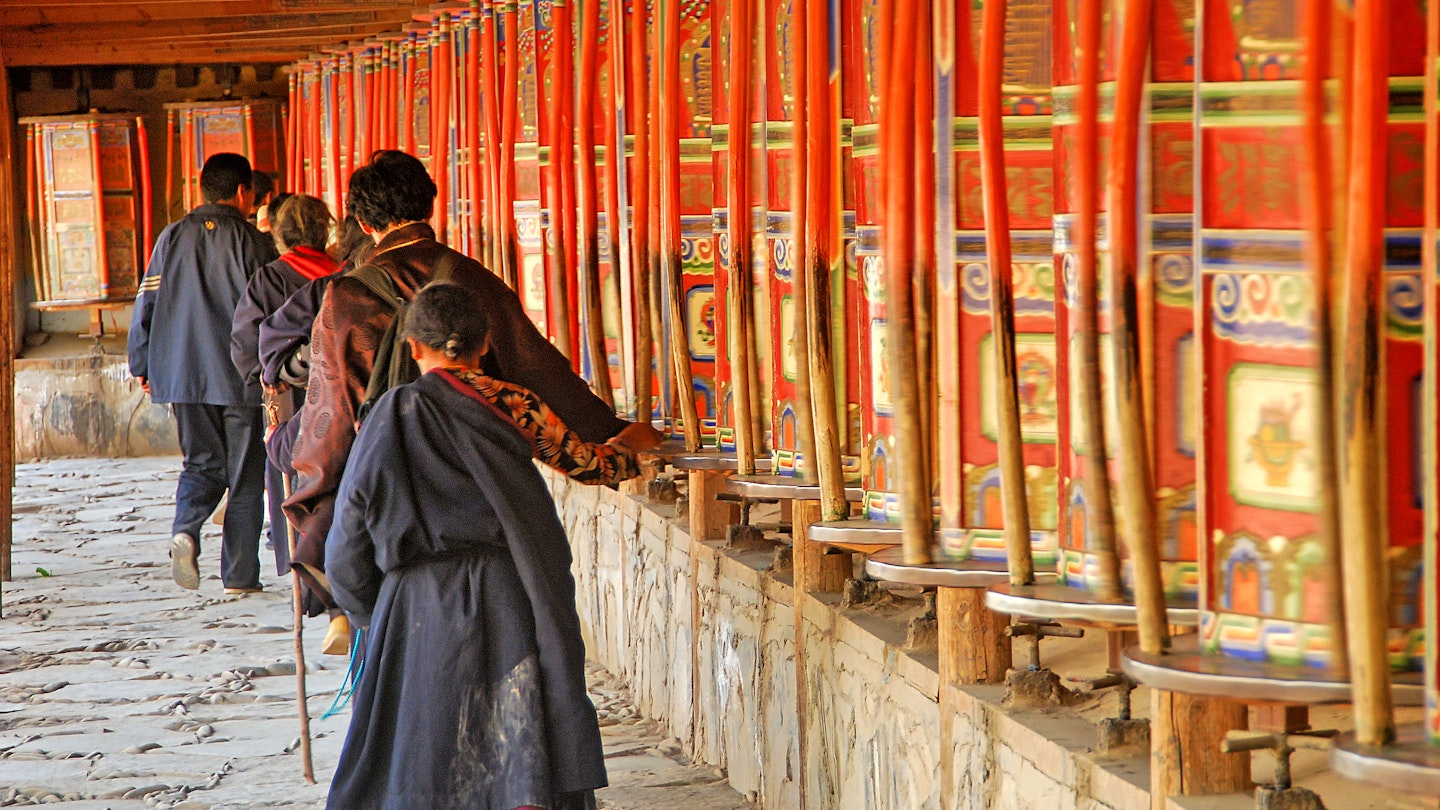Discover the Hidden Gems of Tibet
A trip to the stunningly beautiful and culturally rich plateau of Tibet can be a life-changing experience. The otherworldly monasteries, dramatic roof-of-the-world landscapes, huge salt lakes, and inspiring spiritual and cultural life of the ever-likeable Tibetan people make it an utterly unique place to visit.
However, there are challenges. The Chinese government requires foreign travelers to visit Tibet as part of a pre-arranged tour with a guide, driver, and vehicle, which can dampen spontaneity and exploration. Moreover, domestic Chinese tourism has taken off, with hundreds of thousands of tourists crowding popular monastic sights during peak seasons, particularly in July and August. Jostling for selfies with bemused monks might not be what you envisioned for your Tibetan adventure. Large parts of Tibet now resemble modern China, with busy traffic and more Mandarin spoken in many urban areas than Tibetan. It’s probably not what drew you to Tibet.

Fortunately, all is not lost. There are still many spectacular, special places in Tibet that lie just off the tour group radar. After numerous trips across the country, here are some of the most enchanting locations where you can walk with pilgrims, chat with monks, and enjoy a taste of traditional Tibetan life. Best of all, these magical places are often free from crowds.
Dode Valley, Lhasa
It’s astonishing how quickly you can escape the beaten path in Lhasa. Just north of the city is Pabonka Monastery, one of the oldest in the country. From here, you can hike up to the Dadren Ritrö Hermitage and continue along the ridge, enjoying stunning views over northern Lhasa and the Potala Palace perched on its rocky base, before reaching the Sera Utse retreat center. This strenuous yet rewarding acclimatization hike is a great way to escape the tourist trail if you have just a few days in Lhasa.

Yarlung Tsangpo Valley
Sometimes, hidden gems are right under the nose of a busy tourist route. Thousands of travelers drive the highway between Lhasa and Tsetang via the airport at Gongkar, yet only a few take the time to stop. The Gongkar Chöde and nearby Dratang monasteries host some of the most important Buddhist murals in central Tibet. Just behind Dratang lie the powerful ruins of a 13-storey medieval stupa that was dynamited by Red Guards during the Cultural Revolution.
Samding Monastery
This little-visited monastery between Lhasa and Gyangtse boasts a breathtaking hillside location surrounded by the coiling arms of Lake Yamdok-tso. The guesthouse here offers simple yet cozy dorm rooms to foreign visitors, making it a perfect opportunity to explore monastery chapels in the early morning or late afternoon, when monks gather for prayers, and the incredible views of the Himalayan range bordering Bhutan are at their finest.

Yungdrungling Monastery
There are very few Bön-school monasteries in central Tibet, and Yungdrungling is the largest among them. Its convenient location just off the main Lhasa-Shigatse highway makes it an easy detour; yet, it remains void of tour groups. Walking around the chapels and spinning the prayer wheels anticlockwise in the Bön practice reveals subtle differences between Bön and Buddhist traditions, making for an enriching experience.
Dza Rongphu Retreat, Mt Everest
Everest Base Camp is a popular choice for various tour groups, but it can become congested during peak seasons. Almost everyone overlooks the Dza Rongphu retreat, which is just a ten-minute walk from the main tented accommodations, a few kilometers before base camp. This retreat features a collection of photogenic chortens (stupas) that frame Everest beautifully, maintaining a sense of sacredness.
Phuntsoling Monastery
A worthy detour off the Shigatse to Lhatse road, Phuntsoling offers epic scenery, including sand dunes, photogenic buildings, fortress ruins, and a historically significant 17th-century monastery that serves as the backdrop for a vibrant festival of monk dances in June or July. Visiting here feels like genuine exploration, a rare experience in modern Tibet.
Kyirong Valley
The Kyirong Valley recently opened after the 2015 Nepal earthquake, which closed the main China-Nepal border crossing at Zhangmu. This valley now provides a direct connection between west-central Tibet and Nepal’s scenic Langtang trekking region. There’s much to explore, including a Nepali-style temple, a cliff-face hermitage associated with Tibetan saint Milarepa, and dramatic Alpine scenery that is almost unique in central Tibet.

Lake Manasarovar Monasteries
Five monasteries encircle the sacred Lake Manasarovar in far Western Tibet, out of the original eight that once symbolized the Buddhist Wheel of Law. The most dramatically situated is Gossul on the southwestern shore, overlooking the turquoise waters. Chiu Monastery further north attracts the majority of group visitors; however, it’s also possible to stay overnight in lakeshore monastery guesthouses at Seralung and Trugo, which sees only a small number of pilgrims throughout the year while making their circuit of the lake.
Shegar Dzong

In the rush to reach nearby Everest Base Camp, many visitors overlook the 7km detour north to Shegar town. This detour introduces you to the gravity-defying ruins of the old dzong (fortress) of Shegar, which sits behind the monastery, climbing an impossibly steep crag. If you hike high enough, you’ll be rewarded with a stunning view of Mt Everest to the south.
Drapsang Monastery
A short detour off the road to western Tibet, between Lhatse and Saga, leads to an incredible switchbacking road that culminates at this crag-top monastery. A pilgrim footpath winds from the main chapel for an hour past the sacred meditation cave of Tibetan saint Guru Rinpoche to a hilltop shrine, then back down past monastery ruins, offering fabulous views and an authentic sense of adventure.




